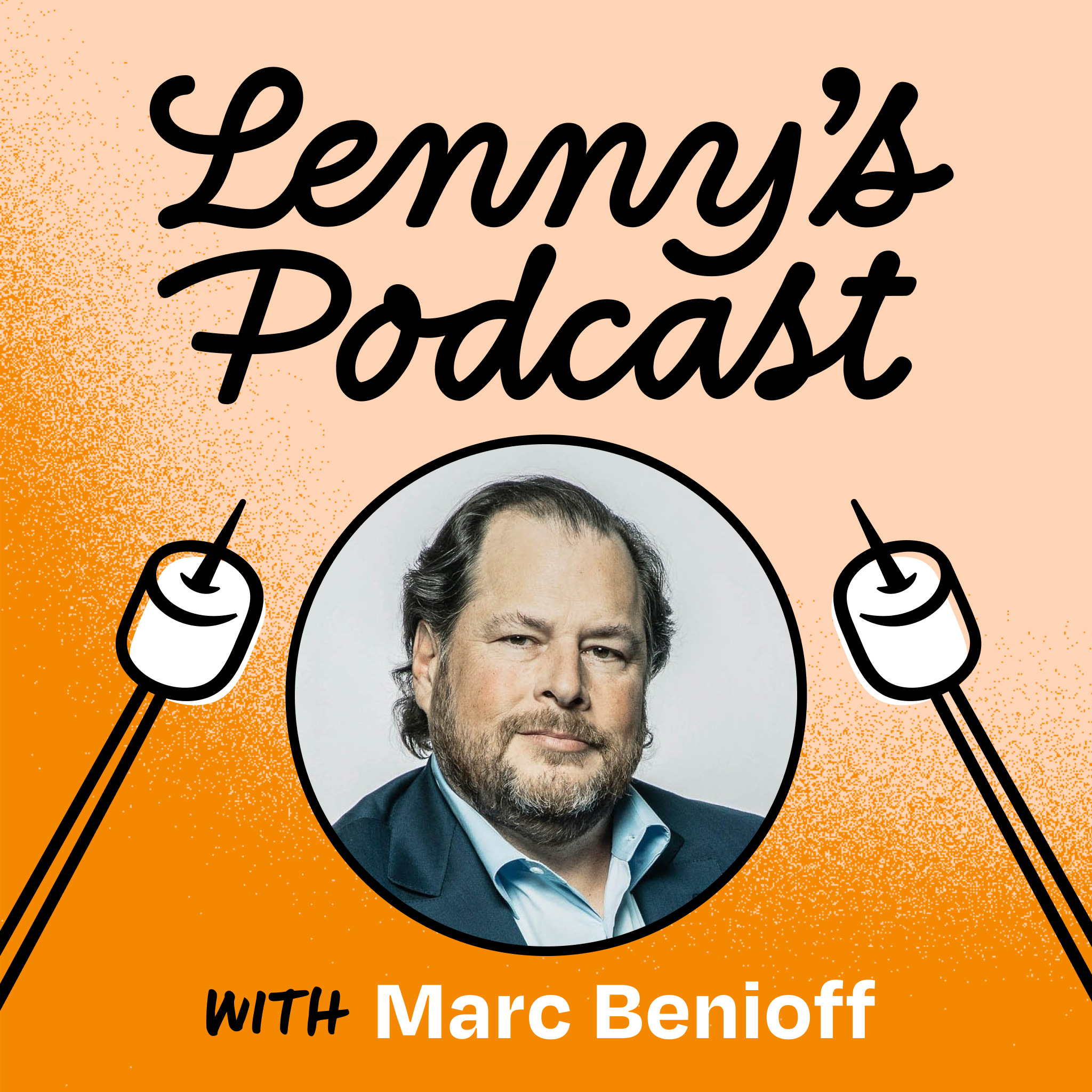How the New York Times led to the fall of AssadAnti-semitism by the New York Times actually made Israel saferYou're currently a free subscriber to The official Ryan McBeth Substack. For the full experience, upgrade your subscription. |
Search thousands of free JavaScript snippets that you can quickly copy and paste into your web pages. Get free JavaScript tutorials, references, code, menus, calendars, popup windows, games, and much more.
How the New York Times led to the fall of Assad
Behind the founder: Marc Benioff
Behind the founder: Marc BenioffSalesforce CEO Marc Benioff on beginner’s mind, AI, marketing, leadership, and life lessons from Steve Jobs
Listen now on Apple, Spotify, and YouTube. Brought to you by: • Cloudinary—The foundational technology for all images and video on the internet — Marc Benioff is the co-founder and CEO of Salesforce, the second-largest software company in the world. He started programming at age 15, selling his first program for $75, and went on to build Salesforce into a company worth more than $300 billion that also owns Slack, Tableau, Quip, and MuleSoft. Marc is known as a marketing legend, and is now leading Salesforce into the era of AI agents. In our conversation, we discuss:
 Find the transcript at: https://www.lennysnewsletter.com/p/behind-the-founder-marc-benioff Some takeaways:
Where to find Marc Benioff: • LinkedIn: https://www.linkedin.com/in/marcbenioff In this episode, we cover: (00:00) Introduction to Marc Benioff and Salesforce (03:54) Marc’s early career and domain names (05:59) The App Store story and lessons from Steve Jobs (15:18) Lessons from launching Salesforce (22:03) The importance of keeping a beginner’s mindset (29:53) Why Marc calls Salesforce the “25-year startup” (31:47) Agentforce (36:09) Why Marc says AI is the defining technology of our lifetime (40:12) AI’s impact on the workforce (42:31) Entrepreneurs need to be like conductors (46:02) Failure corner (50:32) The future of AI agents (56:34) Final thoughts and farewell Referenced: • Bill.com: https://www.bill.com • App Store: https://www.apple.com/app-store/ • Salesforce: https://www.salesforce.com • Oracle: https://www.oracle.com • Larry Ellison on X: https://x.com/larryellison • Siebel Systems: https://en.wikipedia.org/wiki/Siebel_Systems • Saba Software: https://talentedlearning.com/lms-vendor-directory/saba-software • Tom Siebel on LinkedIn: https://www.linkedin.com/in/thomassiebel • Avon: https://www.avon.com • Salesforce Chief Has Pulled Some Crazy Stunts: https://www.businessinsider.com/marc-benioff-salesforcecom-chief-has-pulled-some-crazy-stunts-2012-3 • Matthew McConaughey on Instagram: https://www.instagram.com/officiallymcconaughey • Woody Harrelson on Instagram: https://www.instagram.com/woodyharrelson • “Ask More of AI” with Matthew McConaughey: https://www.youtube.com/playlist?list=PLnobS_RgN7JaxOsLD8WH0I9E6osK3UrfI • Marc’s tweet about the ad with McConaughey and Harrelson: https://x.com/Benioff/status/1866175950062239784 • Chris Rock on Instagram: https://www.instagram.com/chrisrock • Sushi Iwa: http://www.sushiiwa.jp/en/ • Ryoanji Temple Rock Garden: https://www.japan.travel/en/spot/1145/ • Neil Young Archives on Instagram: https://www.instagram.com/neilyoungarchives • Mount Tam: https://en.wikipedia.org/wiki/Mount_Tamalpais • Spirit Rock: https://www.spiritrock.org • Jack Kornfield: https://www.spiritrock.org/teachers/jack-kornfield • Agentforce: https://www.salesforce.com/form/agentforce/demo • Minority Report on Prime: https://www.amazon.com/Minority-Report-Tom-Cruise/dp/B00A2FSSHK • Peter Schwartz on X: https://x.com/peterschwartz2 • UCSF Health: https://www.ucsfhealth.org • A.I. Chatbots Defeated Doctors at Diagnosing Illness: https://www.nytimes.com/2024/11/17/health/chatgpt-ai-doctors-diagnosis.html • Does AI improve doctors’ diagnoses? Study puts it to the test: https://www.sciencedaily.com/releases/2024/11/241113123419.htm • A.I. Will Transform the Global Economy—if Humans Let It: https://www.nytimes.com/2024/12/07/special-series/ai-transform-global-economy.html • Wargames on Prime: https://www.amazon.com/Wargames-Dabney-Coleman/dp/B0011EQBOS • Her on Prime: https://www.amazon.com/Her-Joaquin-Phoenix/dp/B00KATY250 • AI (Einstein) at Salesforce: https://www.salesforce.com/in/artificial-intelligence • Salesforce Signs Definitive Agreement to Acquire Airkit.ai: https://www.salesforce.com/news/stories/salesforce-signs-definitive-agreement-to-acquire-airkit-ai • Salesforce Buys Big Data Startup RelateIQ for Up to $390M: https://techcrunch.com/2014/07/11/salesforce-buys-big-data-startup-relateiq-for-up-to-390m • Salesforce to cut workforce by 10% after hiring ‘too many people’ during the pandemic: https://techcrunch.com/2023/01/04/salesforce-to-cut-workforce-by-10-after-hiring-too-many-people-during-the-pandemic • Michael Dell on LinkedIn: https://www.linkedin.com/in/mdell • Bret Taylor on LinkedIn: https://www.linkedin.com/in/brettaylor • Akio Toyoda: https://en.wikipedia.org/wiki/Akio_Toyoda • Kaizen: https://en.wikipedia.org/wiki/Kaizen • TRS-80: https://en.wikipedia.org/wiki/TRS-80 • CLOAD Magazine: https://archive.org/details/cload_newsletter Recommended books: • Ghost Fleet: A Novel of the Next World War: https://www.amazon.com/Ghost-Fleet-Novel-Next-World/dp/054470505X • Behind the Cloud: The Untold Story of How Salesforce.com Went from Idea to Billion-Dollar Company—and Revolutionized an Industry: https://www.amazon.com/Behind-Cloud-Salesforce-com-Billion-Dollar-Company/dp/0470521163 • Trailblazer: The Power of Business as the Greatest Platform for Change: https://www.amazon.com/Trailblazer-Business-Greatest-Platform-Change/dp/1984825194 Production and marketing by https://penname.co/. For inquiries about sponsoring the podcast, email podcast@lennyrachitsky.com. Lenny may be an investor in the companies discussed. Invite your friends and earn rewardsIf you enjoy Lenny's Newsletter, share it with your friends and earn rewards when they subscribe. © 2024 |
How the New York Times led to the fall of Assad
Anti-semitism by the New York Times actually made Israel safer ͏ ͏ ͏ ͏ ͏ ͏ ͏ ͏ ͏ ͏ ͏ ...
-
code.gs // 1. Enter sheet name where data is to be written below var SHEET_NAME = "Sheet1" ; // 2. Run > setup // // 3....



